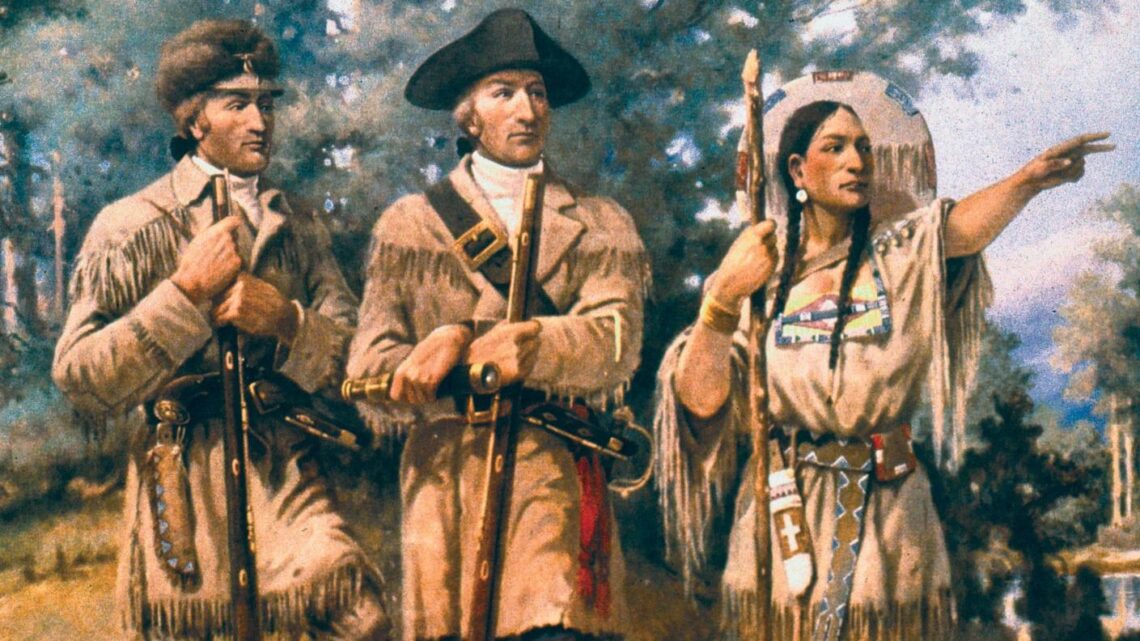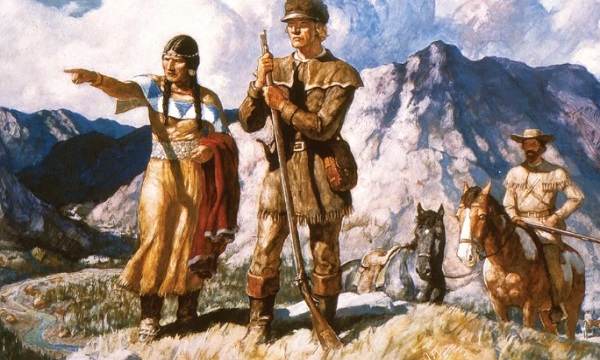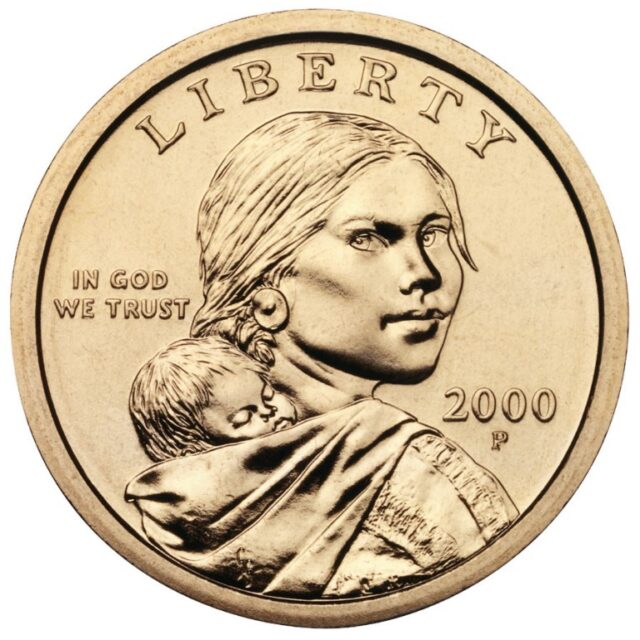
The Best 56 Interesting Facts About Sacagawea (Bird Woman)
Interesting Facts About Sacagawea
Let’s discover some fascinating facts about Sacagawea, also known as Bird Woman, Sacagawea is an iconic figure in American history.
She played a crucial role as a guide and interpreter for the Corps of Discovery. Led by Captains Meriwether Lewis and William Clark, during their exploration of the American West.
In this article, we will delve into the life of Sacagawea and present 56 intriguing facts about this remarkable Native American woman.
From her early years as a member of the Shoshone tribe to her pivotal contributions to the expedition that aimed to reach the Pacific Ocean.
Let’s explore the captivating journey of Sacagawea.
Fact 1: Sacagawea was born in 1788 in present-day Lemhi County, Idaho, and belonged to the Lemhi Shoshone tribe.
Fact 2: At the tender age of 12 or 13, Sacagawea was captured by Hidatsa Indians and later became the wife of French-Canadian fur trader Toussaint Charbonneau.
Fact 3: Sacagawea’s knowledge of the Shoshone language proved invaluable to the expedition when the Corps of Discovery encountered her tribe during their journey.
Fact 4: She joined the Lewis and Clark expedition in 1804, serving as an interpreter, guide, and symbol of peace between the expedition and the Native American tribes they encountered.
Fact 5: Sacagawea carried her infant son, Jean Baptiste Charbonneau, on her back throughout the expedition. Making her the only woman to do so.
The Journey Begins
Fact 6: The Corps of Discovery set off from St. Louis, Missouri, on May 14, 1804. With the objective of reaching the Pacific Ocean.
Fact 7: Sacagawea’s knowledge of edible plants in the region helped sustain the expedition party during their travels.
Fact 8: The Missouri River served as the primary route for the expedition. Allowing them to navigate through the American West.
Fact 9: Sacagawea played a crucial role in negotiating safe passage and acquiring horses from various Native American tribes along the way.
Fact 10: Fort Mandan, located in present-day North Dakota, served as a winter camp for the expedition in 1804-1805. Where Sacagawea and her family stayed.
Contributions to the Expedition

Fact 11: President Thomas Jefferson had envisioned the expedition as a means to explore the newly acquired Louisiana Purchase. An immense territory that doubled the size of the United States.
Fact 12: Sacagawea’s presence and familiarity with the Native American cultures they encountered helped ease tensions and establish peaceful relations.
Fact 13: She proved to be an invaluable asset to the expedition. Offering insights into the geography, flora, fauna, and survival techniques of the American West.
Fact 14: Sacagawea’s quick actions saved important documents. Including Clark’s journals and other valuable items, when their boat capsized in the Missouri River.
Fact 15: She played a critical role in assisting the Corps of Discovery in navigating treacherous terrains. Such as the Rocky Mountains and the Continental Divide.
Reaching the Pacific Coast
Fact 16: The expedition reached the Pacific Coast near present-day Astoria, Oregon, in November 1805. Having traveled thousands of miles over the course of their journey.
Fact 17: Fort Clatsop, located near the mouth of the Columbia River, served as their winter camp from December 1805 to March 1806.
Fact 18: Sacagawea’s knowledge of the local plants and her skills as a boat launcher was crucial during their waterborne explorations along the Columbia River and its tributaries.
Fact 19: During their time at Fort Clatsop, Sacagawea became acquainted with a French-Canadian trapper. Who claimed to have met her brother, Cameahwait, the chief of the Shoshone tribe.
Fact 20: As the expedition prepared for the return journey. Sacagawea’s presence was crucial in negotiating for necessary supplies from the local Native American tribes.
The Return Journey and Beyond

Fact 21: The Corps of Discovery began their return trip in March 1806. Retracing their steps back to St. Louis, Missouri.
Fact 22: Sacagawea’s knowledge of the land and her ability to communicate with various Indian tribes continued to be instrumental during the return journey.
Fact 23: Near the present-day Bozeman Pass in Montana, Sacagawea identified the location where she had been kidnapped by the Hidatsa Indians years ago.
Fact 24: As they crossed the Continental Divide, Sacagawea fell ill with a putrid fever. But she recovered and continued to travel with the expedition.
Fact 25: Sacagawea’s contributions did not end with the expedition. She and her husband were appointed as legal guardians to Clark’s adopted son, Jean Baptiste Charbonneau, after the expedition’s completion.
Legacy and Recognition
Fact 26: Sacagawea became a symbol of courage, resilience, and the invaluable contributions of Native American women to American history.
Fact 27: In recent times, Sacagawea has been commemorated on the U.S. Mint’s dollar coin. Known as the Sacagawea dollar coin, first minted in the year 2000.
Fact 28: Sacagawea’s story gained renewed interest during the suffragette movement. And she was celebrated as an icon of women’s contributions to American society.
Fact 29: Her life and the Lewis and Clark expedition were extensively documented in Clark’s journals. Providing invaluable historical insights into their journey and Sacagawea’s role.
Fact 30: Sacagawea’s legacy lives on, and her remarkable story continues to inspire people. Shedding light on the important role played by Native Americans in shaping American history.
Exploring New Territories
Fact 31: St. Louis, a bustling city on the banks of the Mississippi River, served as the starting point for the Lewis and Clark expedition.
From this bustling urban center, Sacagawea embarked on a journey that would take her to uncharted lands.
Fact 32: Along the course of the expedition, the explorers established Fort Manuel in present-day South Dakota.
This strategic outpost provided a respite and a place for the group to replenish supplies before continuing their arduous journey.
Fact 33: The Yellowstone River, with its powerful currents and awe-inspiring natural beauty, guided the expedition through vast stretches of untamed wilderness.
Sacagawea’s knowledge of the land and her familiarity with the river proved invaluable in navigating its treacherous waters.

Fact 34: As the group ventured further into the unexplored territories, they encountered various tribes, including enemy tribes.
Sacagawea’s presence and diplomatic skills played a crucial role in establishing peaceful interactions and diffusing potential conflicts.
Fact 35: The expedition’s path led them to the Hidatsa villages, where Sacagawea had once been held captive.
This emotional reunion allowed her to reconnect with her past while serving as a bridge between the expedition and the Hidatsa tribe.
Sacagawea’s Maternal Responsibilities
Fact 36: Sacagawea’s first child, Jean Baptiste Charbonneau, born during the expedition, became a cherished member of the group.
Despite the challenges of caring for a newborn in the wilderness, Sacagawea balanced her duties as a guide with her responsibilities as a mother.
Fact 37: The Sacagawea River, located in present-day Montana, serves as a testament to her enduring legacy.
This river, named in her honor, symbolizes her indomitable spirit and the impact she had on the history of the American West.
Fact 38: Sacagawea’s journey as a wife and mother provided a unique perspective within the expedition.
Her experiences highlighted the often-overlooked role of women in historical exploration and the resilience they displayed in the face of adversity.
Contributions Beyond the Expedition
Fact 39: Sacagawea’s presence as an Indian woman and interpreter challenged preconceived notions and fostered cultural understanding.
She defied stereotypes and showed the expedition members, as well as future generations, the importance of embracing diversity and inclusivity.
Fact 40: The United States Mint, recognizing Sacagawea’s impact and significance, honored her by featuring her likeness on the golden dollar coin.
The Sacagawea coin stands as a tribute to her contributions and serves as a reminder of her lasting legacy.
Fact 41: Sacagawea’s involvement in the expedition also brought attention to the vital role of Native American women as interpreters and guides.
She helped pave the way for future interactions between different cultures and contributed to a broader understanding of the Native American tribes of the time.
Sacagawea’s Life’s Challenges and Personal Triumphs
Fact 42: Sacagawea faced numerous hardships throughout her life. From navigating unfamiliar terrains to enduring harsh conditions.
Her perseverance and quick action in overcoming obstacles were essential to the success of the expedition.
Fact 43: At just 16 years of age, Sacagawea demonstrated wisdom beyond her years. Her experiences and encounters with diverse groups allowed her to view the world through different perspectives.
Shaping her into a wise and empathetic individual.
Fact 44: Sacagawea’s remarkable journey brought her under the care and protection of William Clark.
He took a special interest in her well-being, recognizing her contributions. And ensuring that she and her child received the support they needed throughout the expedition.
Clark’s care and guidance fostered a strong bond of trust and respect between Sacagawea and the expedition leaders.
Fact 45: Sacagawea’s role as a guide and interpreter extended beyond her interactions with the Shoshone tribe.
She also acted as a liaison between the expedition and a group of Shoshone Indians they encountered along the way.
Her presence facilitated communication and negotiation, proving instrumental in securing vital resources for the journey.
Fact 46: Sacagawea’s son, Jean Baptiste Charbonneau, affectionately known as “Little Pomp,” became a beloved figure among the members of the expedition.
The presence of a child brought joy and a sense of normalcy amidst the challenges of the journey. Reminding the group of the importance of family and unity.
Facts About Sacagawea
Fact 47: Sacagawea’s husband, Toussaint Charbonneau, a French-Canadian fur trader, often relied on her skills as an interpreter.
Her fluency in multiple languages, including Shoshone and Hidatsa, allowed her to bridge linguistic and cultural gaps within the group, contributing to effective communication.
Fact 48: After the completion of the Lewis and Clark expedition, Sacagawea and her family found themselves settling in the Wind River Reservation in present-day Wyoming.
This land, consisting of thousands of acres, became their new home and a place where they could build a life after their remarkable journey.
Fact 49: Sacagawea’s presence as a Shoshone woman and her invaluable contributions to the expedition earned her respect among other Native American tribes as well.
She became a symbol of strength and resilience, representing the power and influence of Native American women throughout history.
Fact 50: Sacagawea’s impact extended far beyond the years of her involvement in the expedition.
Her legacy and the knowledge she shared with the expedition members continued to shape future explorations and settlement in the American West. Leaving an indelible mark on the history of the region.
Recognition and Legacy
Fact 51: Sacagawea’s journey and her integral role in the Lewis and Clark expedition were meticulously documented in Clark’s journals.
These journals provide valuable insights into her contributions, as well as the challenges and triumphs of the expedition.
Fact 52: Eva Emery Dye, an American author, was captivated by Sacagawea’s story and wrote a book titled “The Conquest: The True Story of Lewis and Clark,”. Further immortalizing Sacagawea’s remarkable life.
Fact 53: Sacagawea’s influence on women’s rights and recognition grew in the late 19th and early 20th centuries.
Her story became a rallying point for the National American Woman Suffrage Association. Highlighting the courage and contributions of women throughout history.
Fact 54: The end of Sacagawea’s documented life remains a mystery. While her final years are not extensively known, her impact and legacy endure.
Continuing to inspire generations of individuals fascinated by her incredible journey and unwavering determination.
Fact 55: The Sacagawea coin, introduced by the United States Mint, serves as a testament to her enduring legacy.
This coin, bearing her likeness, represents her crucial role in American history. And serves as a tangible reminder of her contributions to the nation’s exploration and cultural heritage.

Fact 56: Sacagawea’s brother, Cameahwait, played a significant role in her life and the success of the expedition.
As the chief of the Shoshone tribe, he became an essential ally, providing valuable support and resources during the journey.
Facts About Sacagawea Conclusion:
Sacagawea’s story is one of courage, resilience, and cultural exchange.
Her contributions to the Lewis and Clark expedition were instrumental in the success of their journey and the subsequent exploration and settlement of the American West.
From her early years as a daughter of a Shoshone chief to her role as a guide, interpreter, and symbol of peace. Sacagawea’s impact on American history is immeasurable.
Her journey began in St. Louis, where she joined the expedition that would lead her thousands of miles across uncharted territories.
Along the way, Sacagawea’s knowledge of edible plants, her ability to negotiate with different tribes, and her quick actions in critical situations proved vital to the survival and progress of the group.
Her presence and skills as an interpreter fostered peaceful interactions. Enabling effective communication with the tribes they encountered, including the Hidatsa and the Shoshone.
Fort Manuel, established during the expedition, provided a temporary haven amidst the vast wilderness. Allowing Sacagawea and the group to regroup and replenish supplies.
The Yellowstone River, with its awe-inspiring beauty and powerful currents, guided them through uncharted territories.
And Sacagawea’s intimate knowledge of the land served as a compass in their exploration.
Sacagawea as a Mother
As a mother, Sacagawea’s determination and resilience shone through.
She carried her infant son, Jean Baptiste Charbonneau, throughout the arduous journey, showcasing the strength and fortitude of Native American women.
Her role as a wife and mother further humanized the expedition, reminding the group of the importance of family and unity.
The Lewis and Clark expedition marked a significant chapter in Sacagawea’s life, but her influence extended far beyond.
Her legacy lives on, not only through the Sacagawea coin minted by the United States Mint but also through the ongoing recognition of her contributions to American history.
Sacagawea’s remarkable journey continues to captivate the imagination of people worldwide.
Her story has been immortalized in various forms, from William Clark’s journals to Eva Emery Dye’s book.
Ensuring that future generations will be inspired by her bravery and the valuable role she played in shaping American history.
As the daughter of a Shoshone chief, Sacagawea’s impact on Native American communities cannot be understated.
Her ability to bridge cultures, foster understanding, and showcase the strength and resilience of Native American women serves as an inspiration to this day.
Facts About Sacagawea
In conclusion, Sacagawea’s journey with the Lewis and Clark expedition remains an extraordinary testament to the spirit of exploration and the power of cultural exchange.
Her contributions, both as a guide and interpreter and as a symbol of courage and resilience, have secured her place as an iconic figure in American history.
Sacagawea’s legacy continues to inspire individuals to embrace diversity, celebrate the contributions of Native Americans, and explore the untamed frontiers of knowledge and understanding.





3 Comments
Pingback:
Pingback:
Pingback: